Census Shifts by OMG Unite – Part 2
The Census takes place every 10 years and generates a snap-shot of the UK population. The first phase of the 2021 Census was released in the summer of 2022, compiling the most detailed data on the make-up of the UK since 2011.
Knowing the shifts in our population; who they are, where they are and their wellbeing, is vital to shaping an effective and inclusive brand strategy. While the full Census data set won’t be released until mid-2023, a staggered release of individual sets of data will run from Autumn to Winter 2022. To keep you informed, OMG UNITE have created ‘Census Shifts’, a content series exploring the trends and changes seen over the last three decades in our population, with a cultural twist.
Following our first set of ‘Census Shifts’ insights released alongside the initial Census data, we are pleased to share the second set of insights in the series.
The International Migration data of the 2021 Census was released on 2nd November. Whilst country of birth and passport do not equal ethnicity, and many UK-born diverse communities are not included in the stats (ethnicity data is due to be released late November), it is a strong indication on the growth and direction of our society in the UK. We have highlighted three key shifts and the implications they have on how brands approach inclusive marketing moving forwards.
Please note that the language, terminology and segmentation used throughout this blog post is consistent with that of the Census.
The importance of engaging with first-generation residents
What’s new
One in six residents of England and Wales were born outside the UK.
Of the 10 million residents in England and Wales who weren’t born in the UK, 4.2m (42.4%) have arrived since 2011.
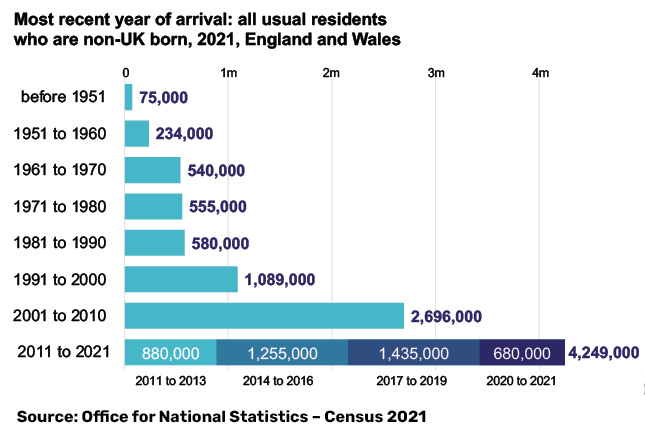
What it means to our industry
Covid and Brexit haven’t reversed the migration trend as many had predicted. Apart from being an essential sociocultural consideration for brands, diversity and inclusion can also be a key growth driver
due to the significant size of this audience.
The 4.2m first generation residents that have arrived in the UK in the last 10 years are more likely to follow cultural traditions and media consumption from their countries of birth. Community media channels will play a key role in reaching them.
What we can do now
OMG UNITE’s specialists and proprietary Diversity Insight Tool (DIT) can provide an indepth understanding of these communities, their cultures and how they relate to your brand and products.
Use multicultural media to ensure your campaigns reach these communities equally and at the same frequency as other audiences. As most multicultural media is not included in industry tools, use UNITE’s proprietary platforms, such as the Diverse Community Network Platform, to access 500+ minority owned or led media and content platforms across TV, Radio, Print and Digital as a key enabler to drive growth.
Moving beyond skin colour for truly inclusive comms
What’s new
5.9 million residents (9.9% of the total population) hold a non-UK passport, with Poland being the most commonly held (760,000, 1.3% of all residents).
The number of UK residents holding European passports has increased significantly: particularly from
Eastern European countries e.g. those holding Romanian passports increased by 576% from 2011.
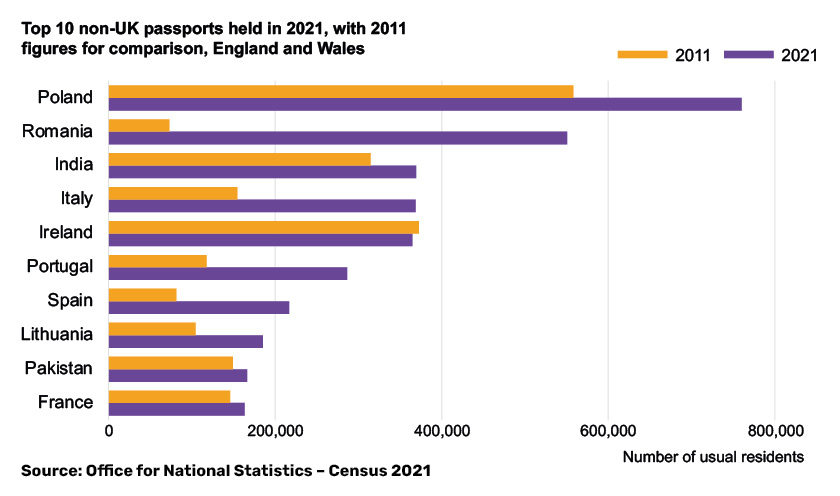
The South Asian community, the largest ethnic group in the UK, continues to increase with India, Pakistan and Bangladesh all in the top 10 non-UK countries of birth.
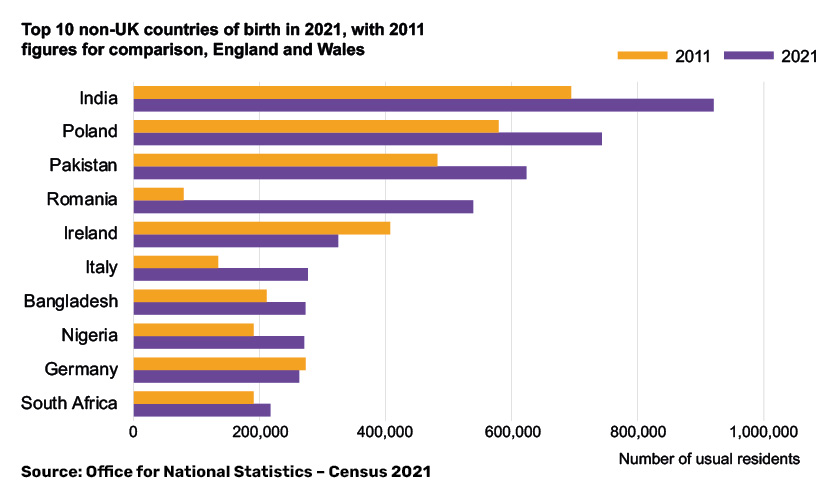
What it means to our industry
Central and Eastern European residents have increased significantly. Although commonly not considered as ethnic minorities due to many being White, it’s important to consider a bespoke communications plan to address cultural differences and potential language barriers. For instance, a recent campaign targeted towards Polish people performed 3x better when the messaging was delivered in their mother tongue vs English.
Despite already being the largest group, the South Asian community in the UK has also grown significantly, and with it the importance for brands to reach this audience. Although there are many cultural differences within this community, they often have shared media consumption i.e. the Pakistani community commonly consume Indian media channels and vice versa.
Authentic diverse communication preferences, consumption habits and language barriers are key considerations for brands, creative and media agencies.
What we can do now
Expand your definition of diversity beyond skin colour when considering inclusive communications.
OMG UNITE can help to distil and understand nuances of different communities and their cultural heritage, as well as help define what inclusivity means specifically for your brand.
Cultural localisation is key
What’s new
All regions across England and Wales have seen an increase in non-UK born residents from 2011 to 2021. The regions with the highest % change are the North West and East Midlands (over 49%+) whilst London has seen the lowest at 19%+.
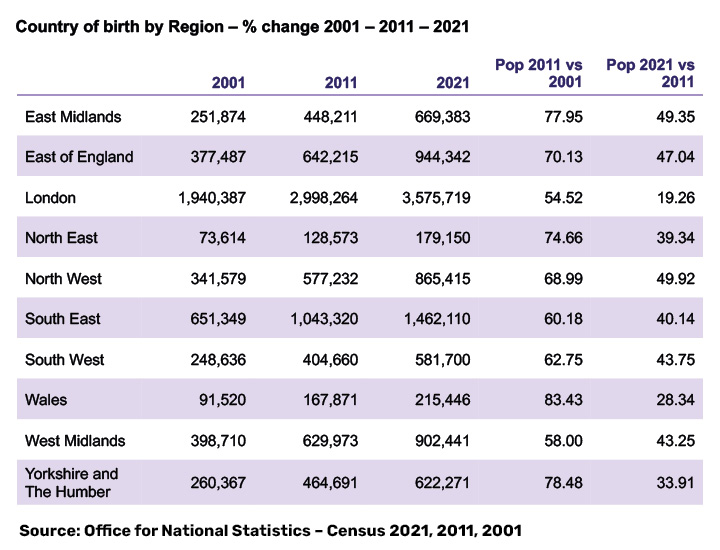
The capital still has the highest number of non-UK born residents (3.5m) – more than 4 in 10 (40.6%) London residents are non-UK born, and more than 1 in 5 (23.3%) have a non-UK passport.
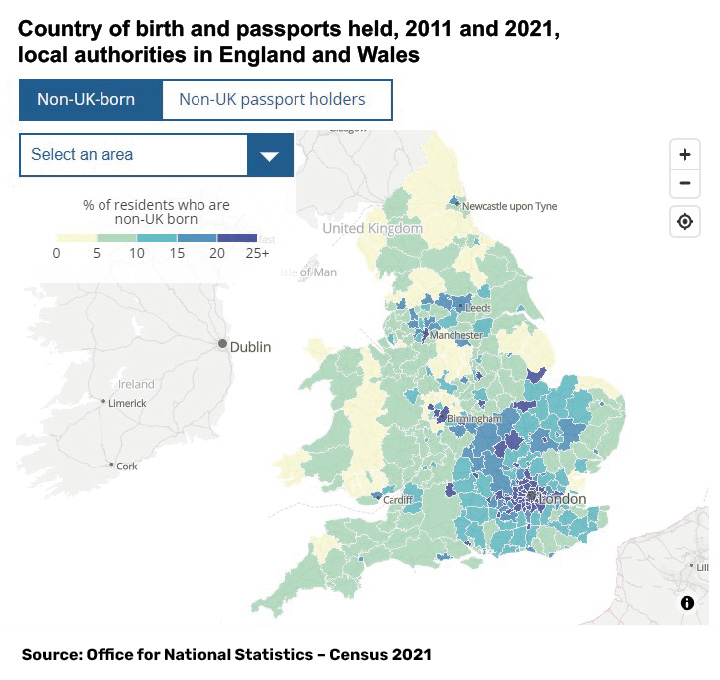
What it means to our industry
With the concentration of non-UK residents shifting from predominantly urban areas and the make-up of these audiences varying by Local Authority, we need to find ways to make our communications contextually more relevant. For instance, using the same media channels and creative to reach the population in Brent (where 56% of residents are born outside the UK) as well as those in Redcar and Cleveland where 99% of residents hold UK passports) is highly unlikely to drive the required results.
With the 2021 census data now available we can develop a renewed approach to diversify our creative and media activity.
What we can do now
Rethink our approach of running regional and local campaigns. Use tools such as OMG UNITE’s Audience Mapper to drive contextual relevancy based on audience make-up.
Include creative consultancy services to ensure your creative and content is culturally relevant to the area and the media you advertise in.
Summary
With the increase in first-generation residents in the UK, an inclusive approach to advertising is important to drive growth.
Diversity is more than skin deep – consider cultural differences and potential language barriers in your communications strategies.
